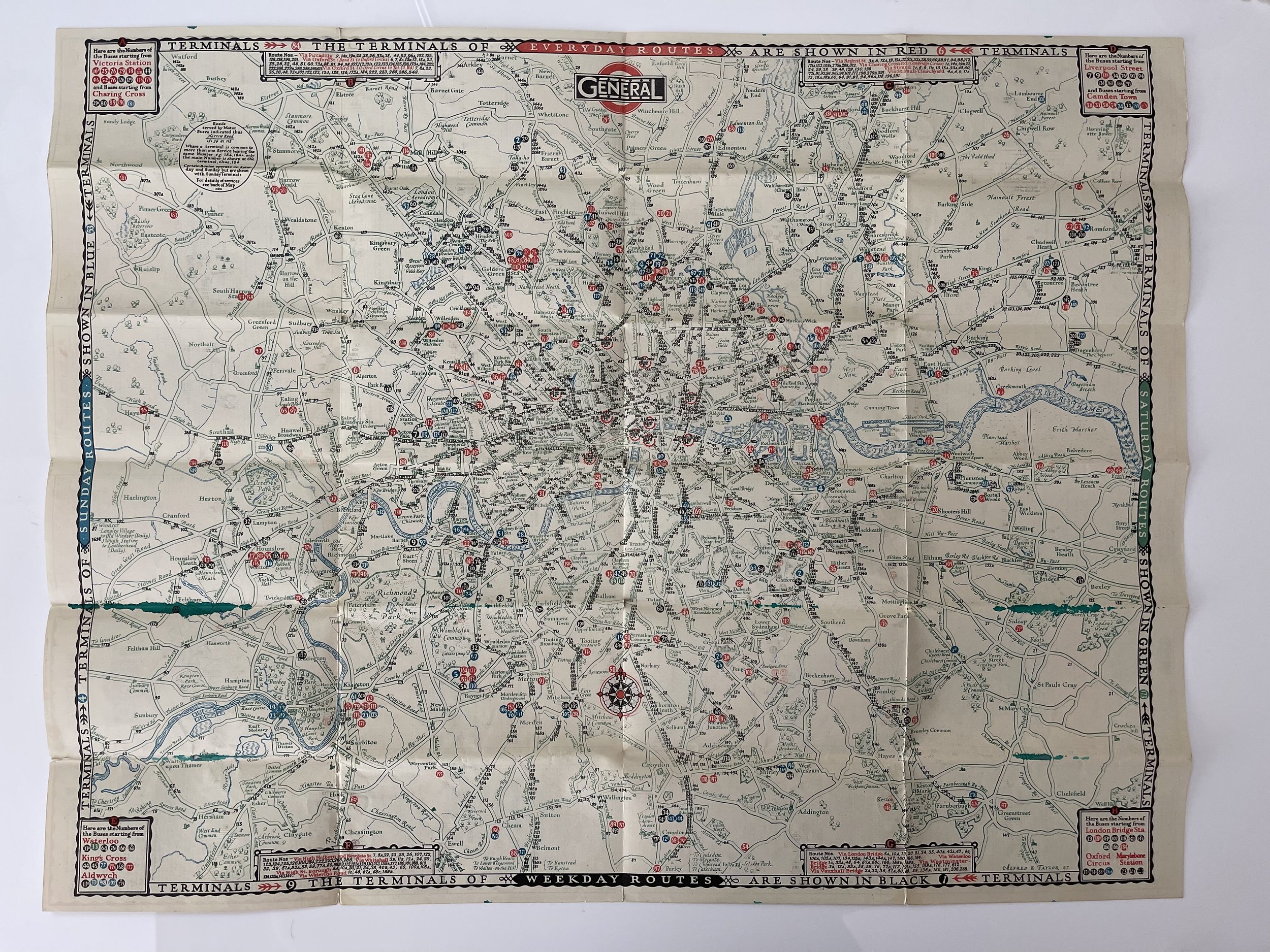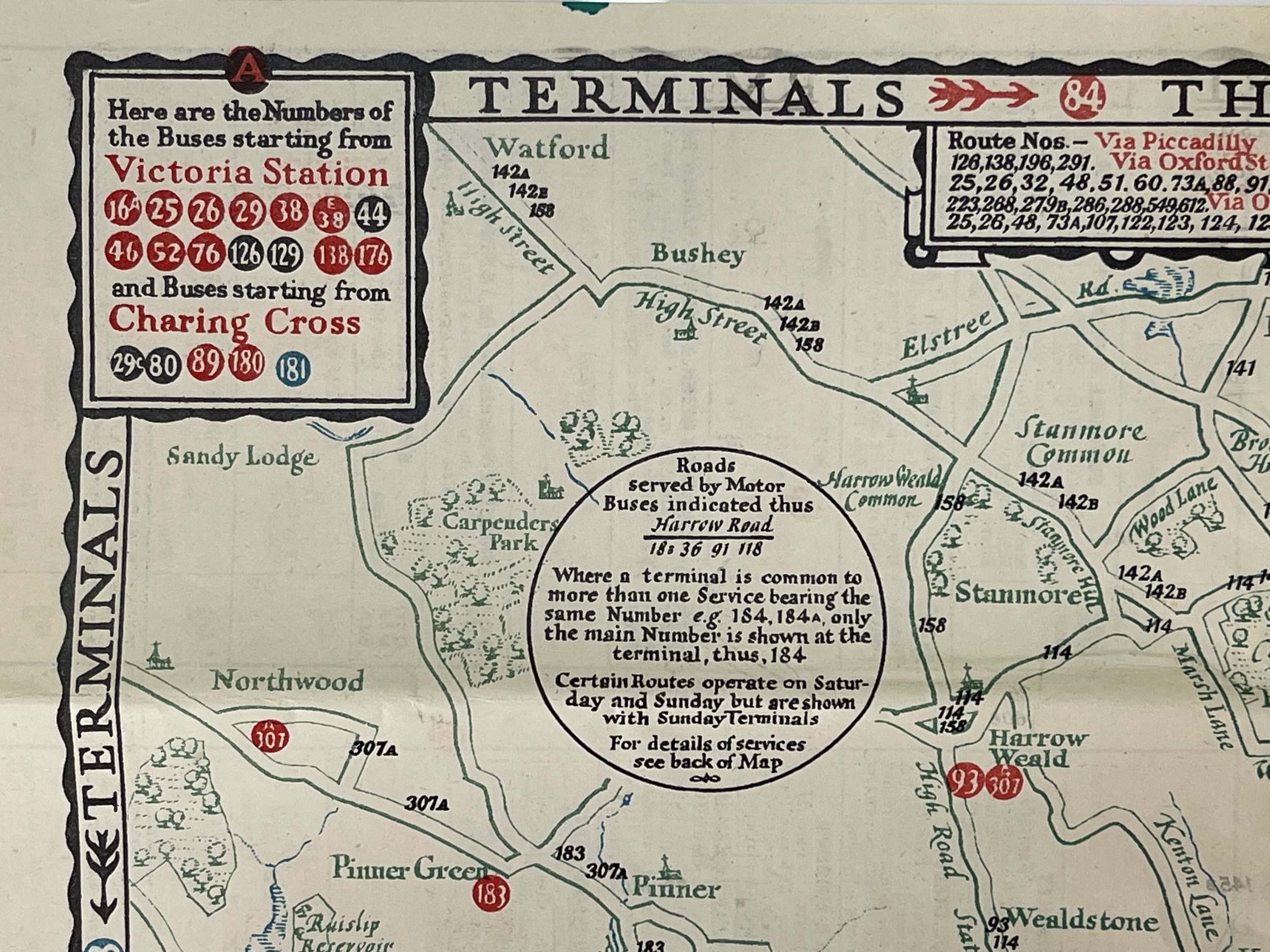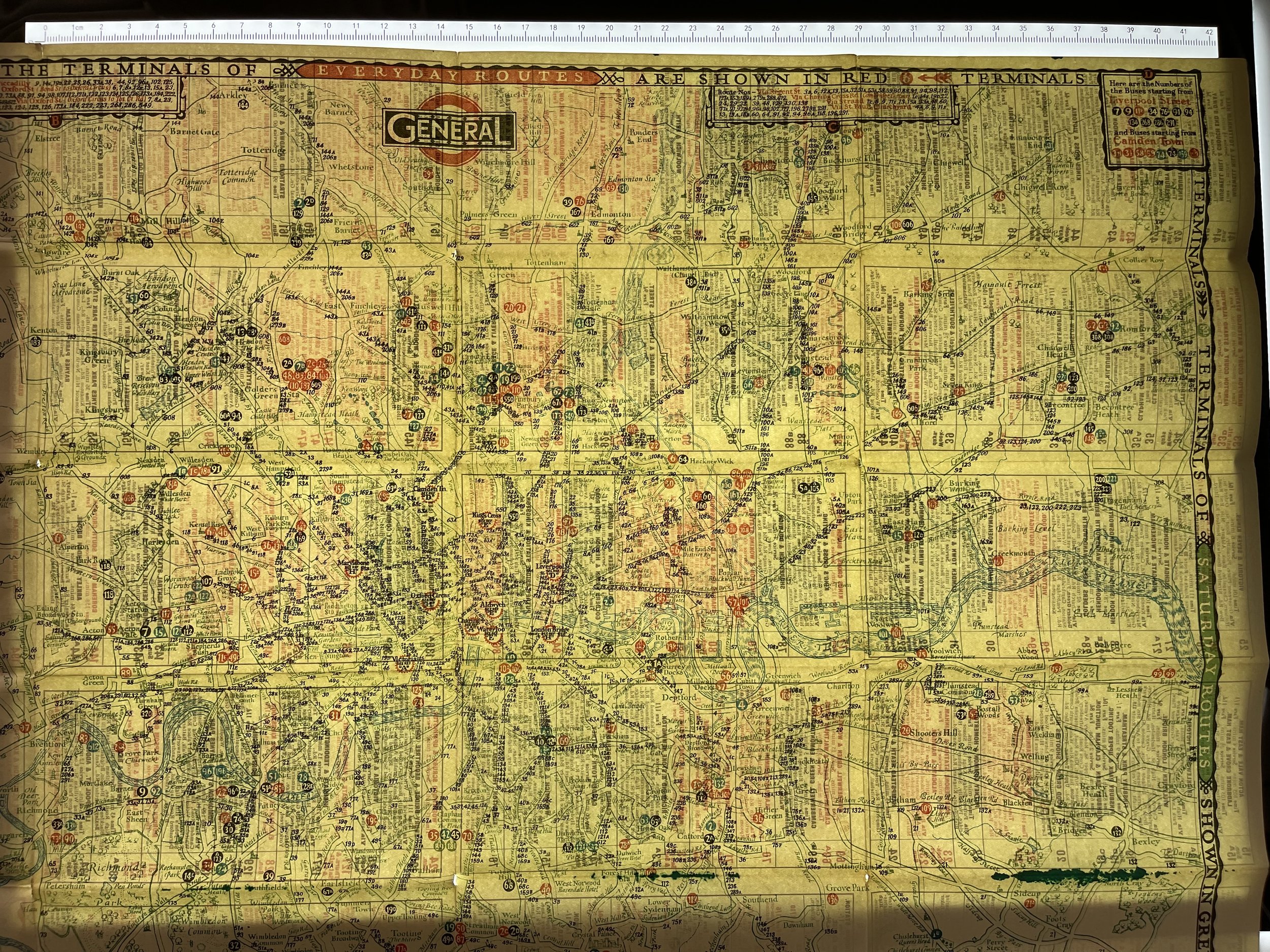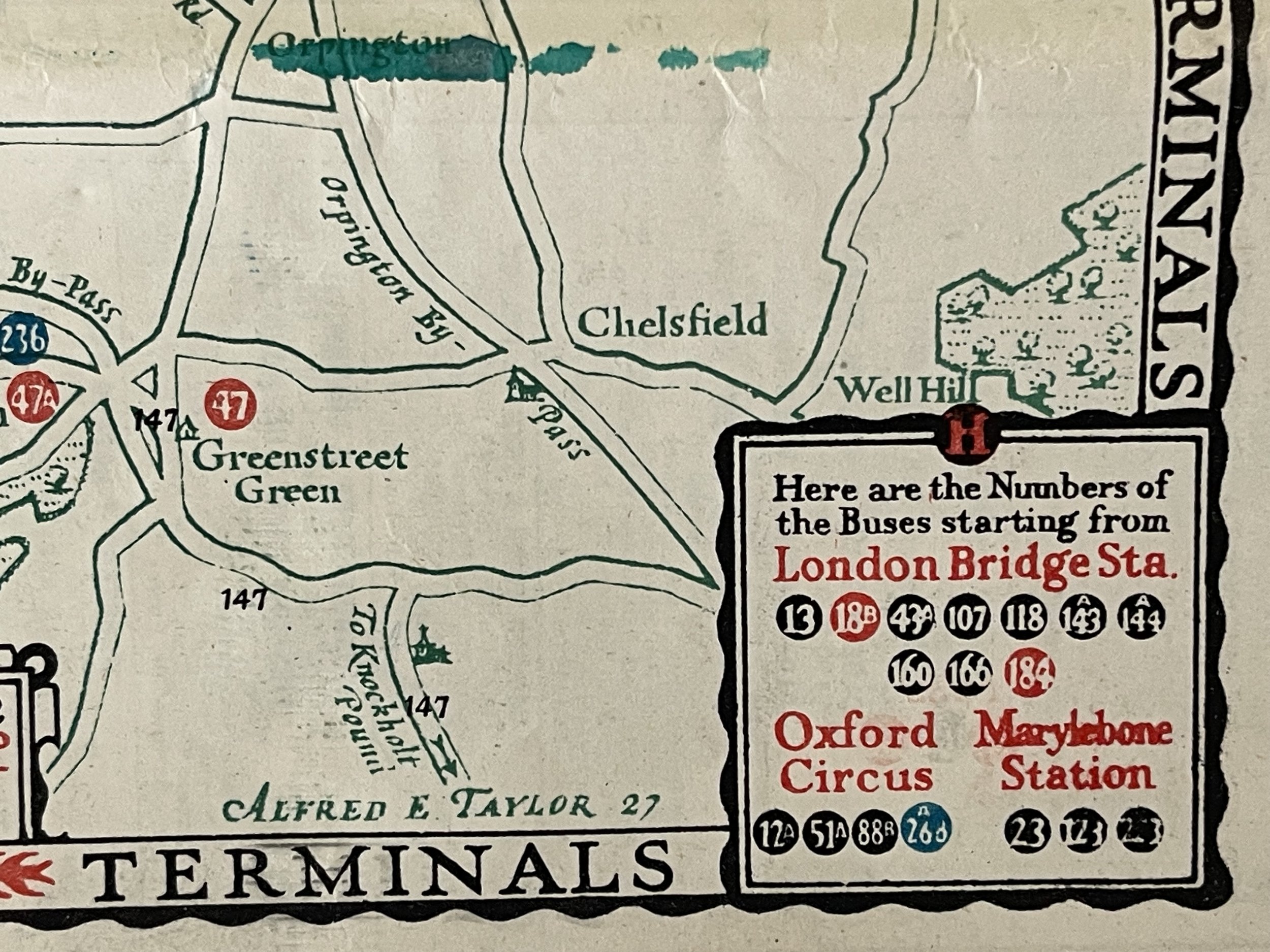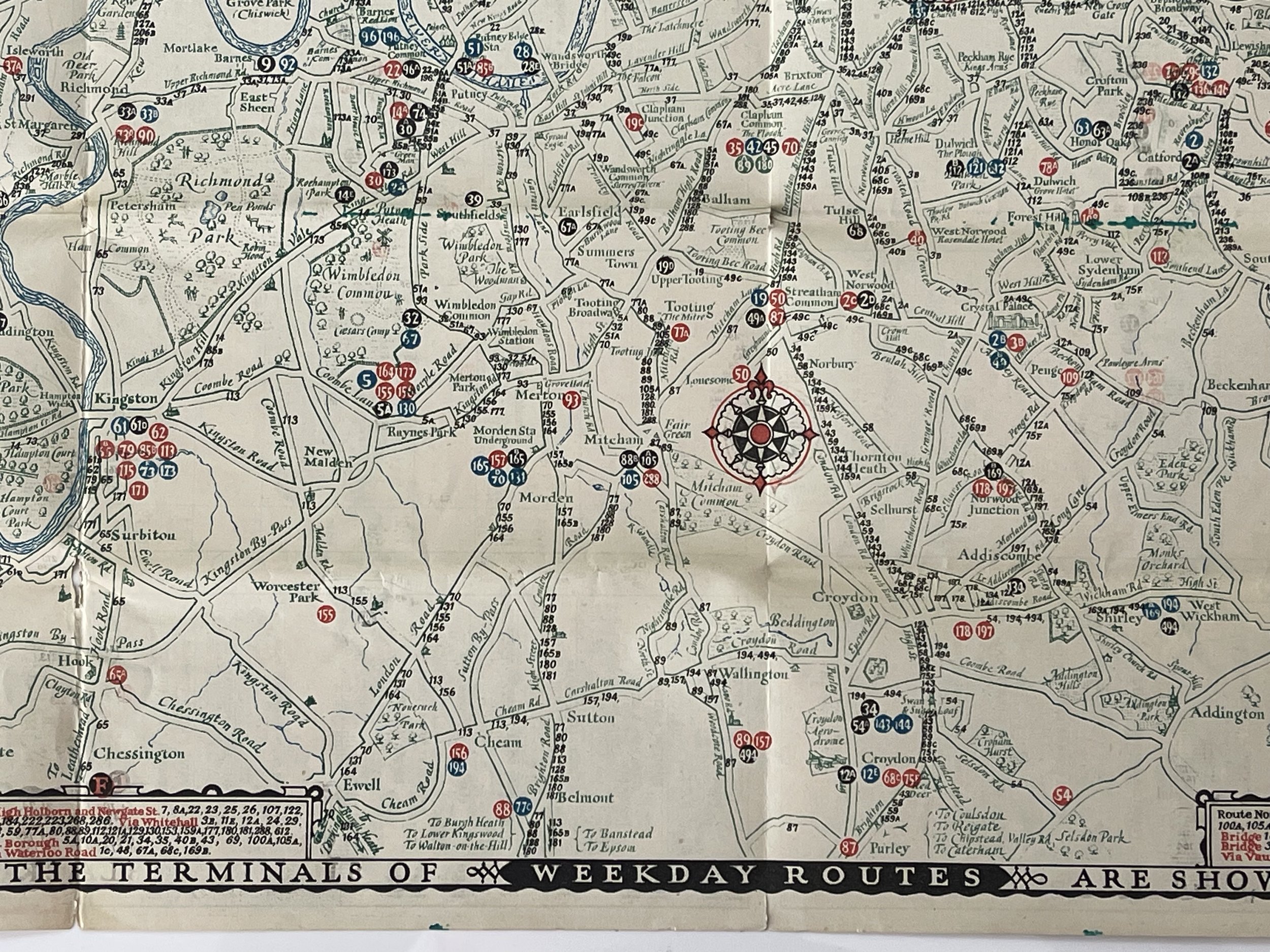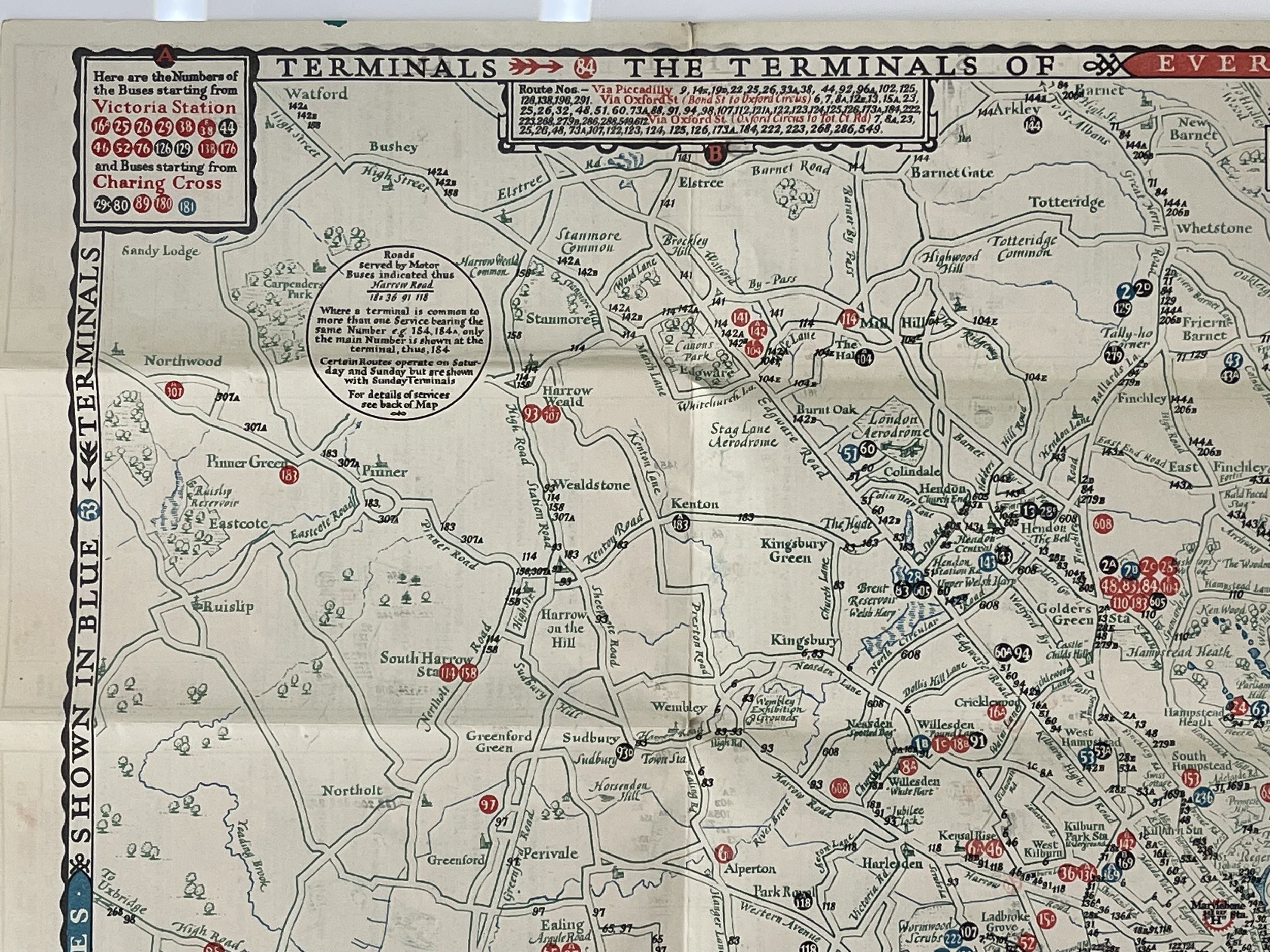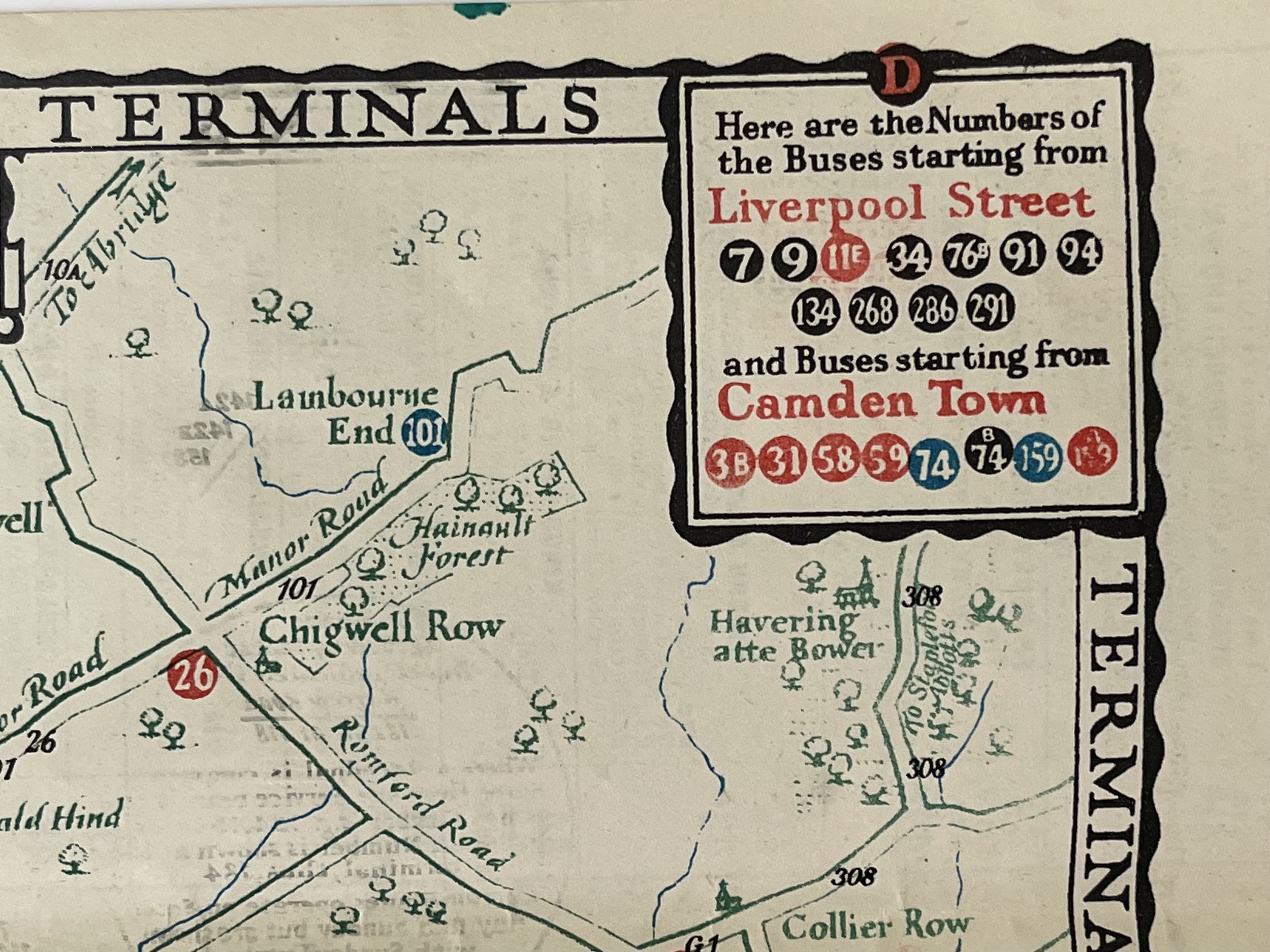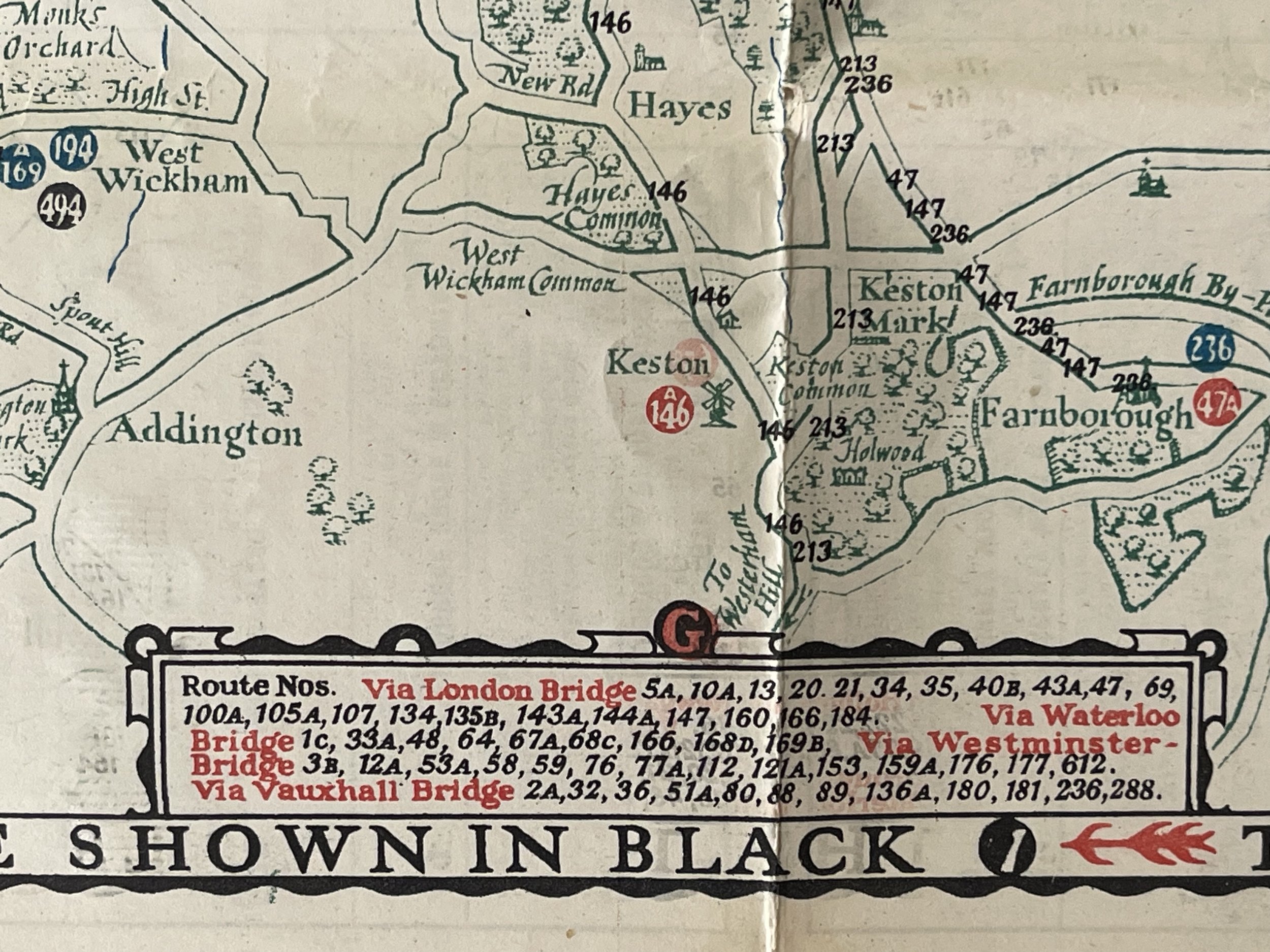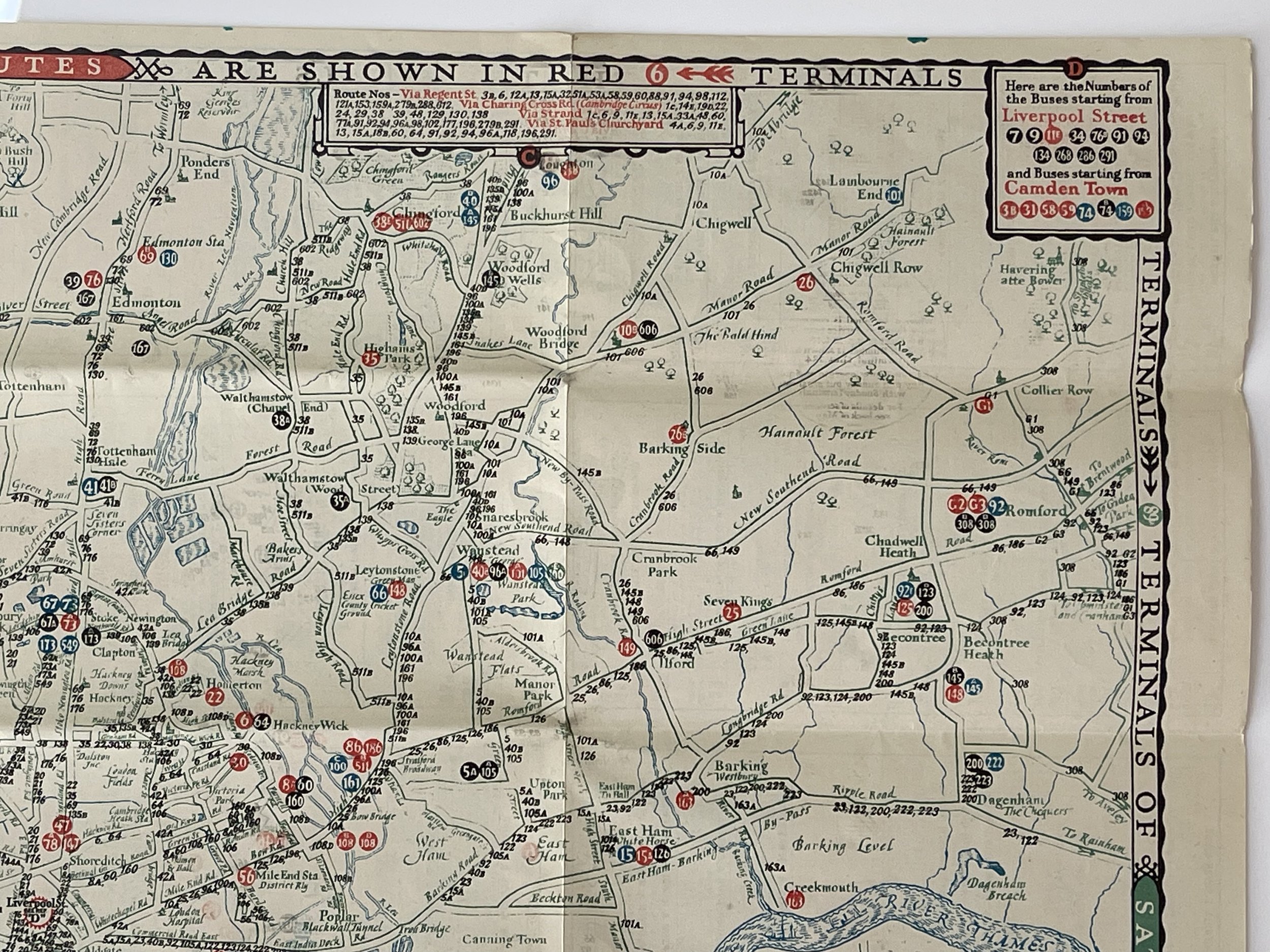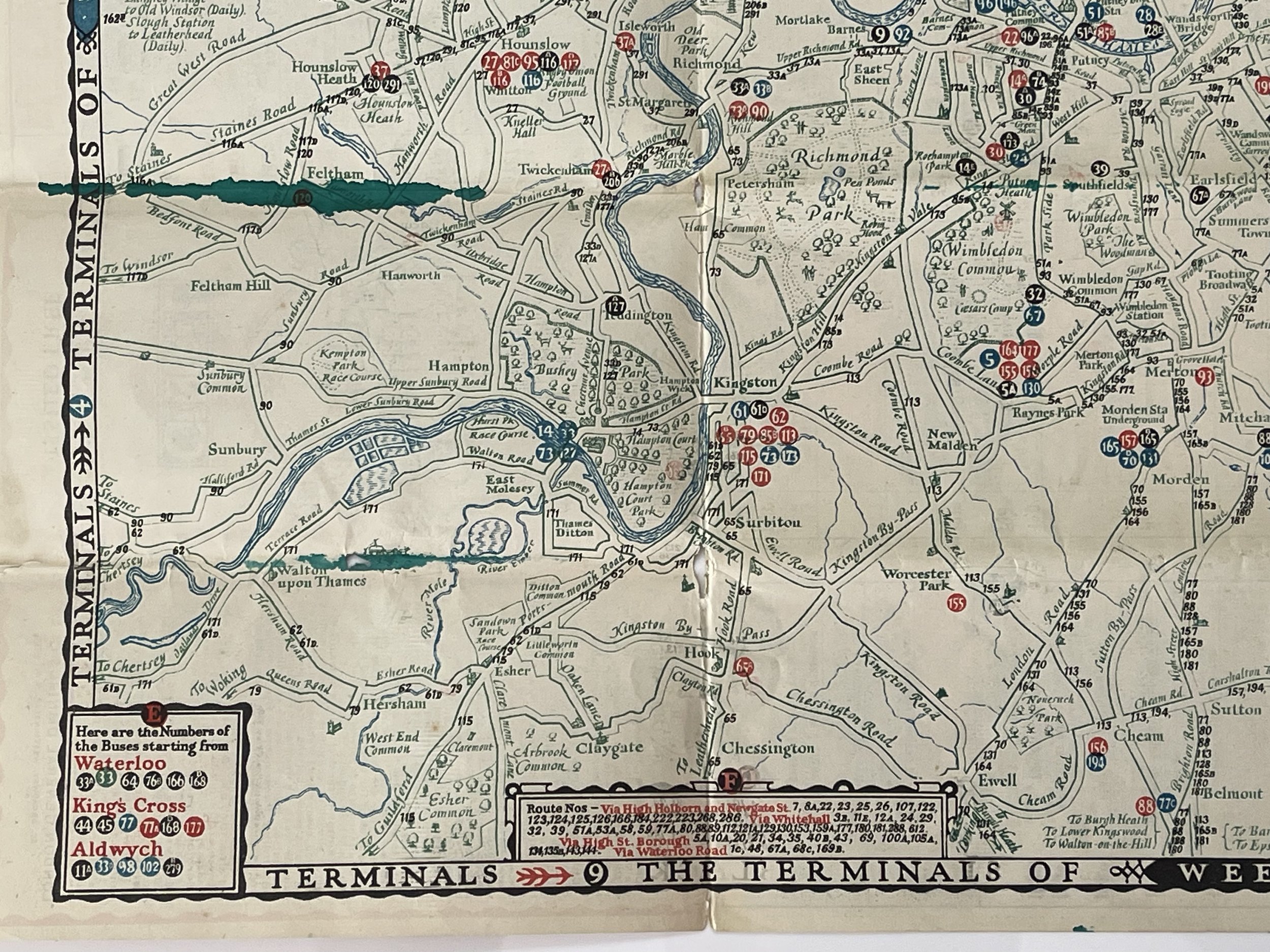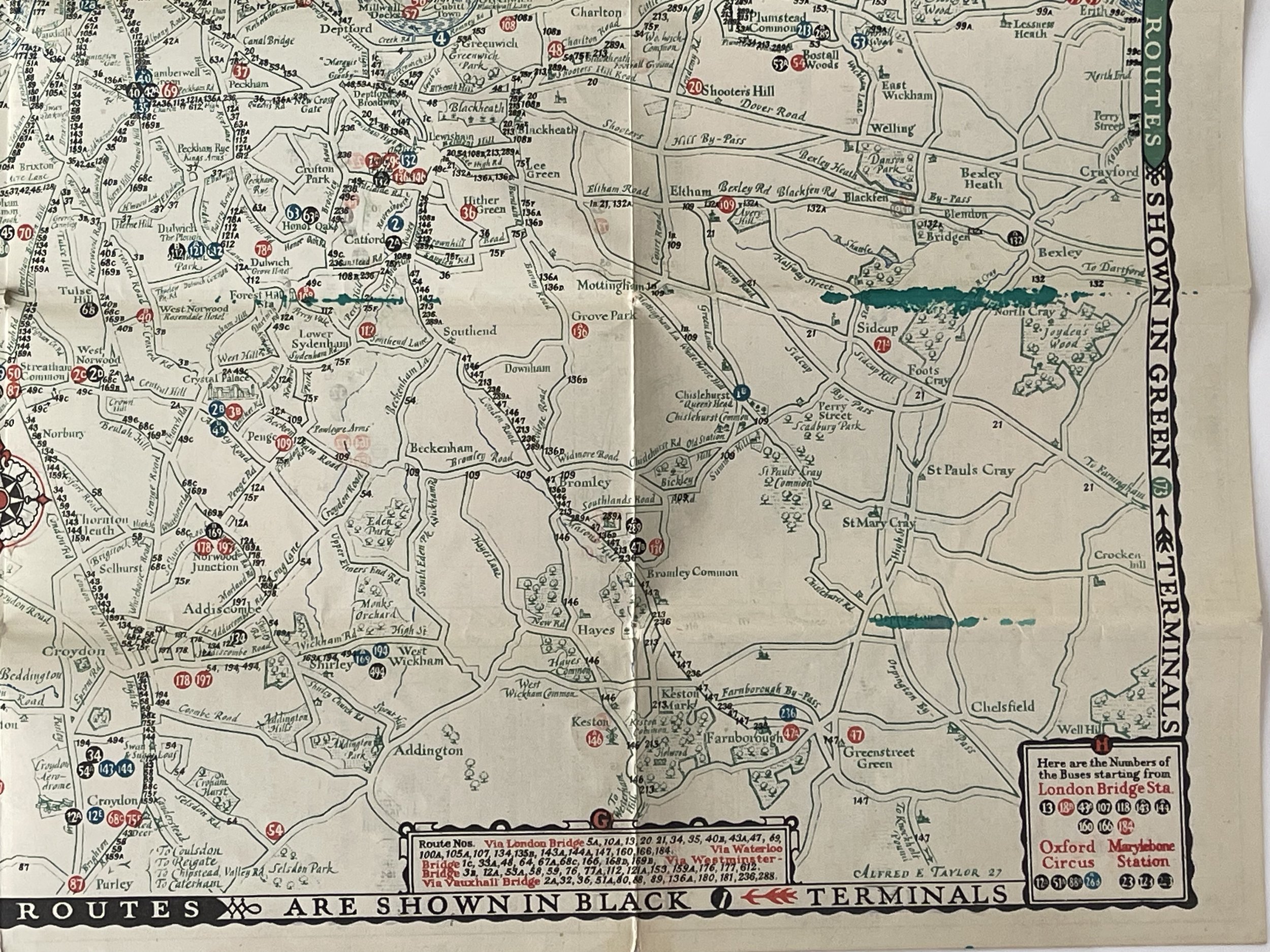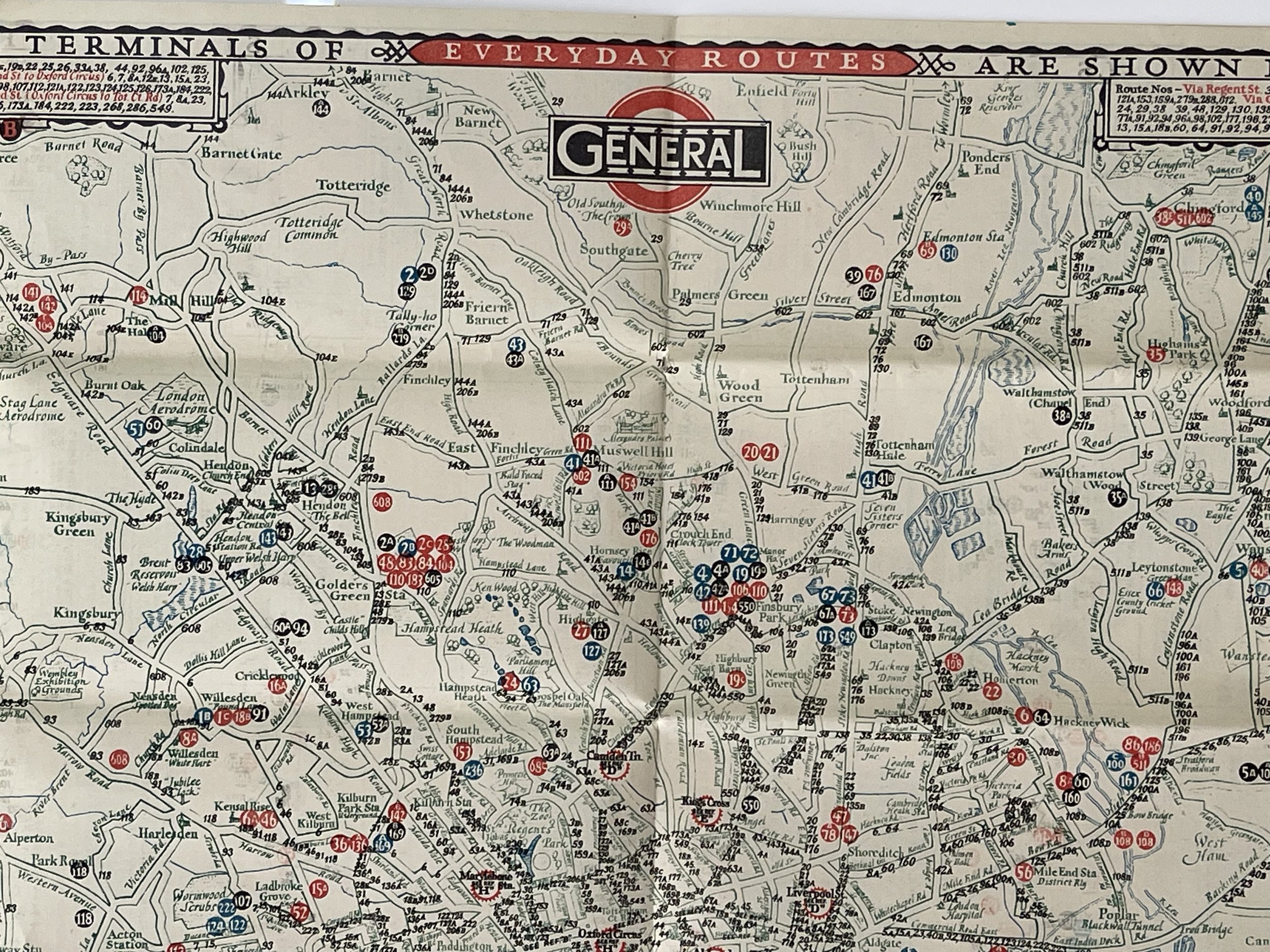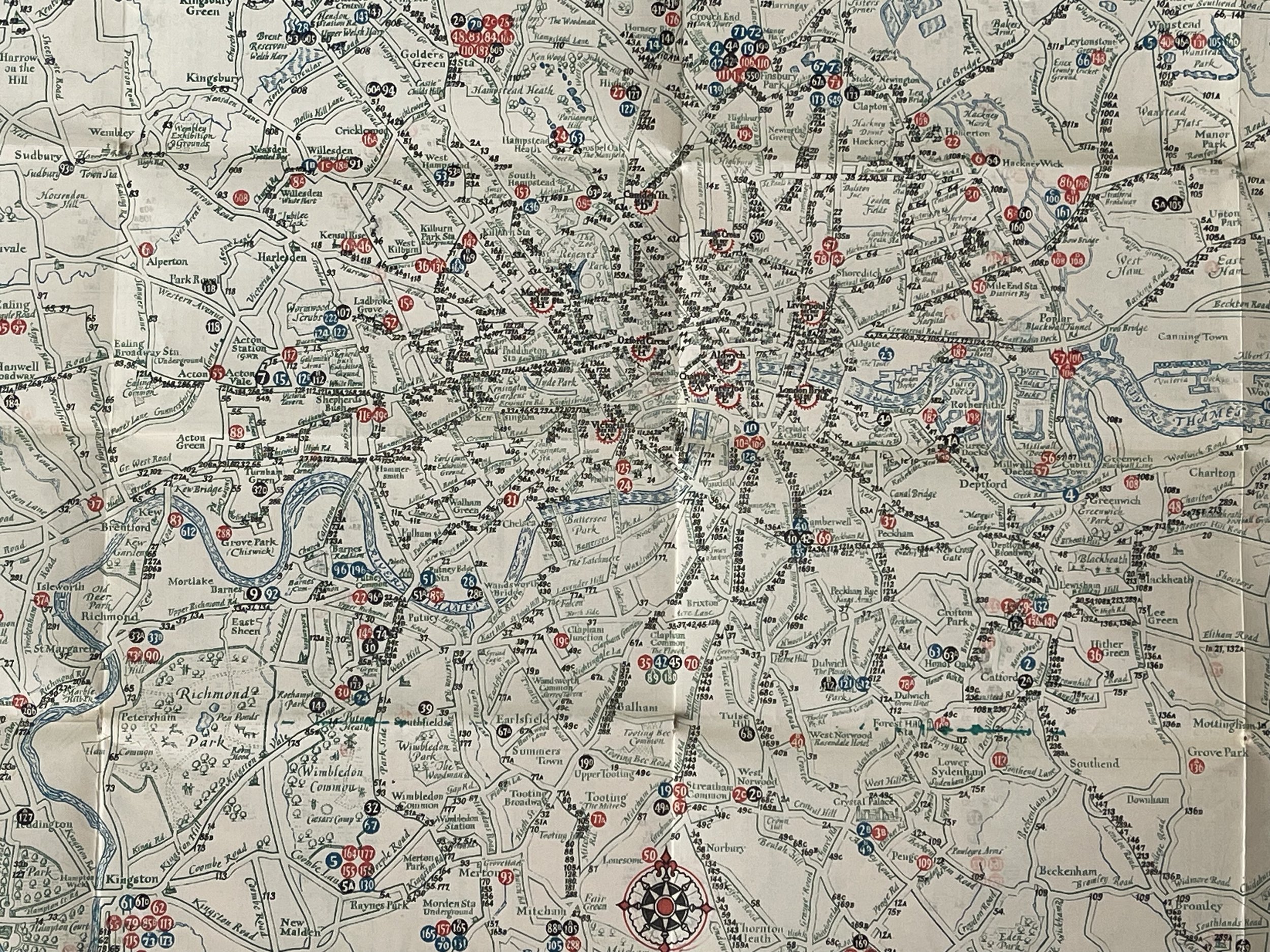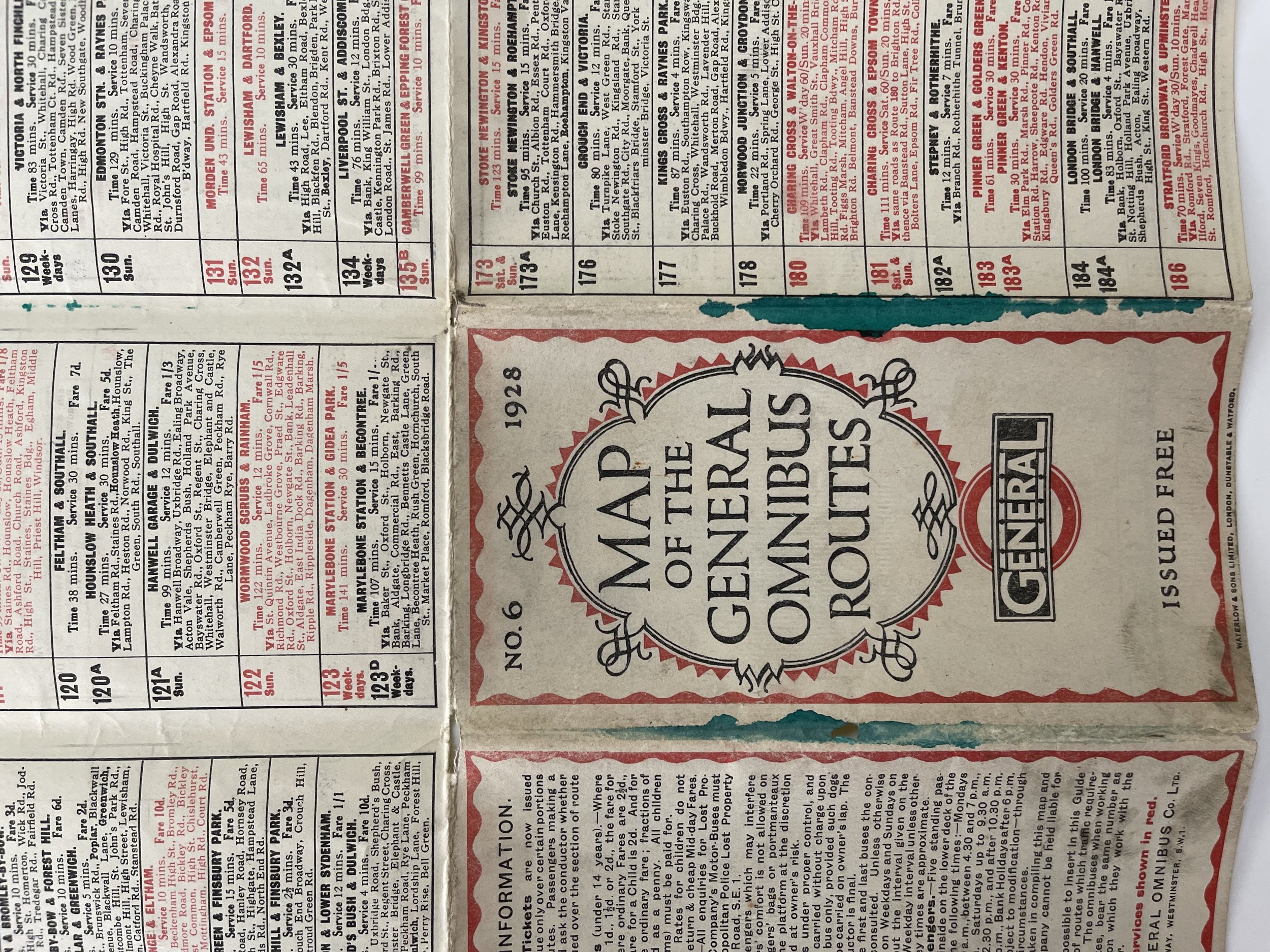London General Bus Routes London Underground - London General Omnibus Company Ltd - 1928
London General Bus Routes London Underground - London General Omnibus Company Ltd - 1928
The London General Omnibus Company or LGOC, was the principal bus operator in London between 1855 and 1933. It was also, for a short period between 1909 and 1912, a motor bus manufacturer.
The London General Omnibus Company or LGOC, was the principal bus operator in London between 1855 and 1933. It was also, for a short period between 1909 and 1912, a motor bus manufacturer.
The London General Omnibus Company was founded in 1855 to amalgamate and regulate the many independent horse-drawn omnibus services then operating in London. Originally an Anglo-French enterprise, also known as the Compagnie Generale des Omnibus de Londres, the LGOC soon became the largest omnibus operator in London. It bought out hundreds of independently owned buses and established a consistent level of service for its fleet. Within a year, the LGOC controlled 600 of London's 810 omnibuses.
Under its chairman Sir John Pound, in 1902 it looked at an option to purchase a competitor, the Star Omnibus Company, but it was unable to complete negotiations. LGOC began using motor omnibuses in 1902, and the last LGOC horse-drawn bus ran on 25 October 1911.
In 1908 the LGOC bought the Road Car Company, the Vanguard Company, and its other main rivals, thereby gaining a virtual monopoly in London.
The merger of these three companies (the Road Car Company was also known as Union Jack owing to its habit of flying the British flag on its vehicles) gave the new and enlarged LGOC the most experienced operating and engineering personnel of any operator - and perhaps manufacturer - in the country at the time.
The LGOC absorbed the Great Eastern London Motor Omnibus Company (previously known as London Motor Omnibus Company) in March 1911.
In 1912, the Underground Group, which owned most of the London Underground, bought the LGOC. This followed the start of negotiations between the two companies in 1910 that finally led to the publication of an official statement regarding the proposed terms of the merger on 19 January 1912. By early February 1912 the majority of shareholders in the LGOC had accepted the terms. This in time allowed increasing co-ordination between LGOC bus and tube services, with integrated fares, such as was seen with the opening of the bus station adjacent to Hammersmith station in April 1914.
In 1933, the LGOC, along with the rest of the Underground Group, became part of the new London Passenger Transport Board. The name London General fell into disuse, and London Transport instead became synonymous with the red London bus.
A very collectible map of the london transport system. Some inc staining allong one of the joins. Still a beautiful map for omnce collection or wall decoration. Pricing and grading commensurate.
London General Bus Routes London Underground - London General Omnibus Company Ltd - 1928
The London General Omnibus Company or LGOC, was the principal bus operator in London between 1855 and 1933. It was also, for a short period between 1909 and 1912, a motor bus manufacturer.
The London General Omnibus Company or LGOC, was the principal bus operator in London between 1855 and 1933. It was also, for a short period between 1909 and 1912, a motor bus manufacturer.
The London General Omnibus Company was founded in 1855 to amalgamate and regulate the many independent horse-drawn omnibus services then operating in London. Originally an Anglo-French enterprise, also known as the Compagnie Generale des Omnibus de Londres, the LGOC soon became the largest omnibus operator in London. It bought out hundreds of independently owned buses and established a consistent level of service for its fleet. Within a year, the LGOC controlled 600 of London's 810 omnibuses.
Under its chairman Sir John Pound, in 1902 it looked at an option to purchase a competitor, the Star Omnibus Company, but it was unable to complete negotiations. LGOC began using motor omnibuses in 1902, and the last LGOC horse-drawn bus ran on 25 October 1911.
In 1908 the LGOC bought the Road Car Company, the Vanguard Company, and its other main rivals, thereby gaining a virtual monopoly in London.
The merger of these three companies (the Road Car Company was also known as Union Jack owing to its habit of flying the British flag on its vehicles) gave the new and enlarged LGOC the most experienced operating and engineering personnel of any operator - and perhaps manufacturer - in the country at the time.
The LGOC absorbed the Great Eastern London Motor Omnibus Company (previously known as London Motor Omnibus Company) in March 1911.
In 1912, the Underground Group, which owned most of the London Underground, bought the LGOC. This followed the start of negotiations between the two companies in 1910 that finally led to the publication of an official statement regarding the proposed terms of the merger on 19 January 1912. By early February 1912 the majority of shareholders in the LGOC had accepted the terms. This in time allowed increasing co-ordination between LGOC bus and tube services, with integrated fares, such as was seen with the opening of the bus station adjacent to Hammersmith station in April 1914.
In 1933, the LGOC, along with the rest of the Underground Group, became part of the new London Passenger Transport Board. The name London General fell into disuse, and London Transport instead became synonymous with the red London bus.
A very collectible map of the london transport system. Some inc staining allong one of the joins. Still a beautiful map for omnce collection or wall decoration. Pricing and grading commensurate.
London General Bus Routes London Underground - London General Omnibus Company Ltd - 1928
The London General Omnibus Company or LGOC, was the principal bus operator in London between 1855 and 1933. It was also, for a short period between 1909 and 1912, a motor bus manufacturer.
The London General Omnibus Company or LGOC, was the principal bus operator in London between 1855 and 1933. It was also, for a short period between 1909 and 1912, a motor bus manufacturer.
The London General Omnibus Company was founded in 1855 to amalgamate and regulate the many independent horse-drawn omnibus services then operating in London. Originally an Anglo-French enterprise, also known as the Compagnie Generale des Omnibus de Londres, the LGOC soon became the largest omnibus operator in London. It bought out hundreds of independently owned buses and established a consistent level of service for its fleet. Within a year, the LGOC controlled 600 of London's 810 omnibuses.
Under its chairman Sir John Pound, in 1902 it looked at an option to purchase a competitor, the Star Omnibus Company, but it was unable to complete negotiations. LGOC began using motor omnibuses in 1902, and the last LGOC horse-drawn bus ran on 25 October 1911.
In 1908 the LGOC bought the Road Car Company, the Vanguard Company, and its other main rivals, thereby gaining a virtual monopoly in London.
The merger of these three companies (the Road Car Company was also known as Union Jack owing to its habit of flying the British flag on its vehicles) gave the new and enlarged LGOC the most experienced operating and engineering personnel of any operator - and perhaps manufacturer - in the country at the time.
The LGOC absorbed the Great Eastern London Motor Omnibus Company (previously known as London Motor Omnibus Company) in March 1911.
In 1912, the Underground Group, which owned most of the London Underground, bought the LGOC. This followed the start of negotiations between the two companies in 1910 that finally led to the publication of an official statement regarding the proposed terms of the merger on 19 January 1912. By early February 1912 the majority of shareholders in the LGOC had accepted the terms. This in time allowed increasing co-ordination between LGOC bus and tube services, with integrated fares, such as was seen with the opening of the bus station adjacent to Hammersmith station in April 1914.
In 1933, the LGOC, along with the rest of the Underground Group, became part of the new London Passenger Transport Board. The name London General fell into disuse, and London Transport instead became synonymous with the red London bus.
A very collectible map of the london transport system. Some inc staining allong one of the joins. Still a beautiful map for omnce collection or wall decoration. Pricing and grading commensurate.
Code : A1066
Cartographer : Cartographer / Engraver / Publisher: London General Omnibus Company Ltd
Date : Publication Place / Date - 1928
Size : Sheet size: 57.5 x 44.5 Cm
Availability : Available
Type - Genuine - Almost Antique
Grading A-
Where Applicable - Folds as issued. Light box photo shows the folio leaf centre margin hinge ‘glue’, this is not visible otherwise.
Tracked postage, in casement. Please contact me for postal quotation outside of the UK.
